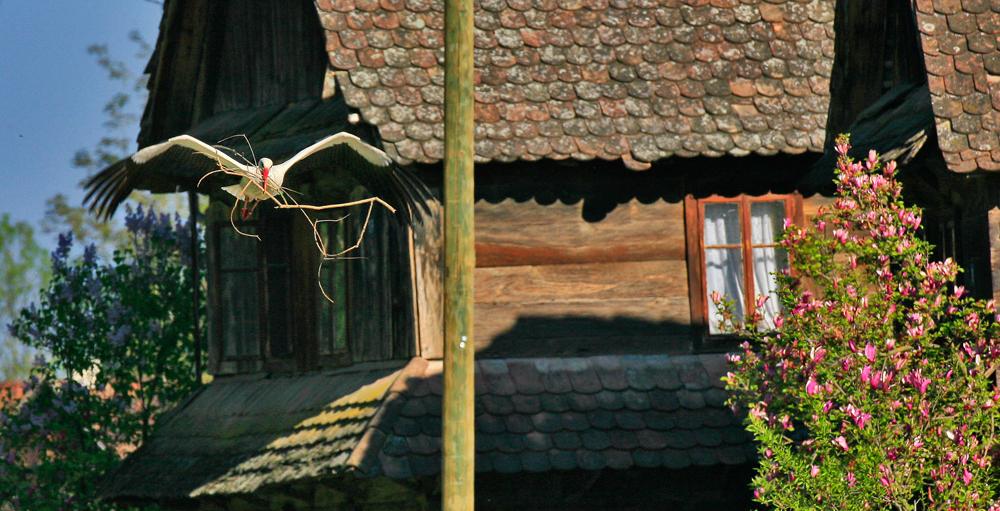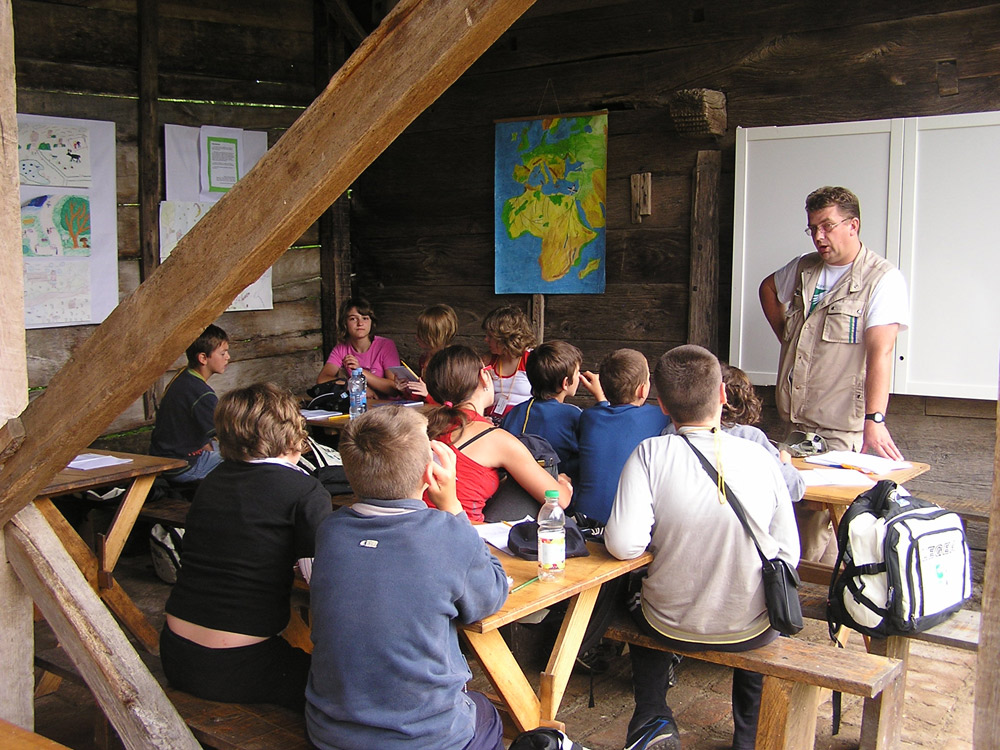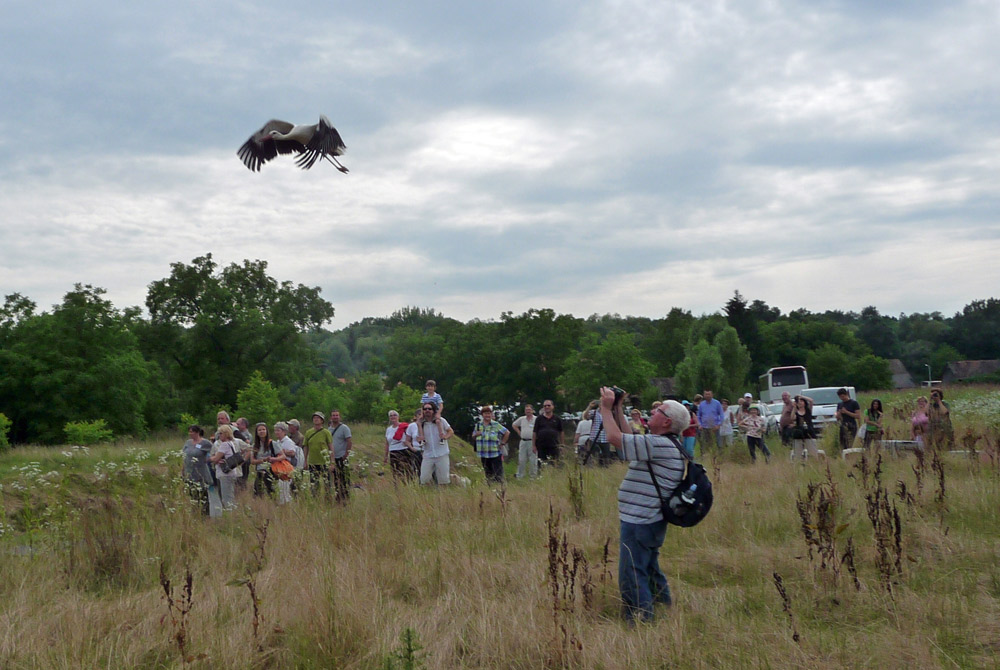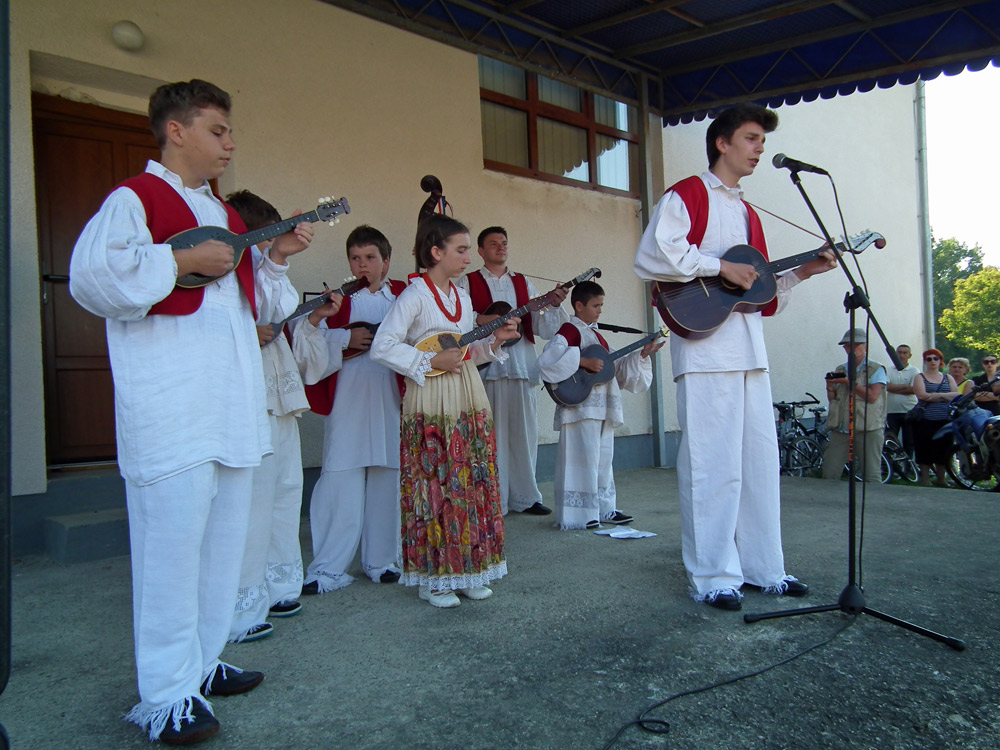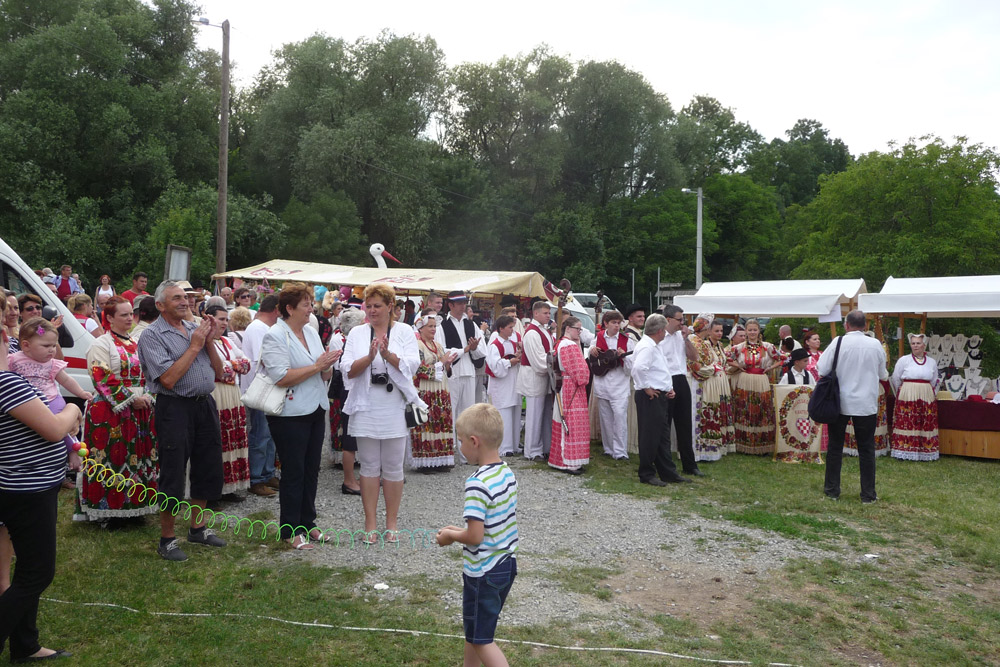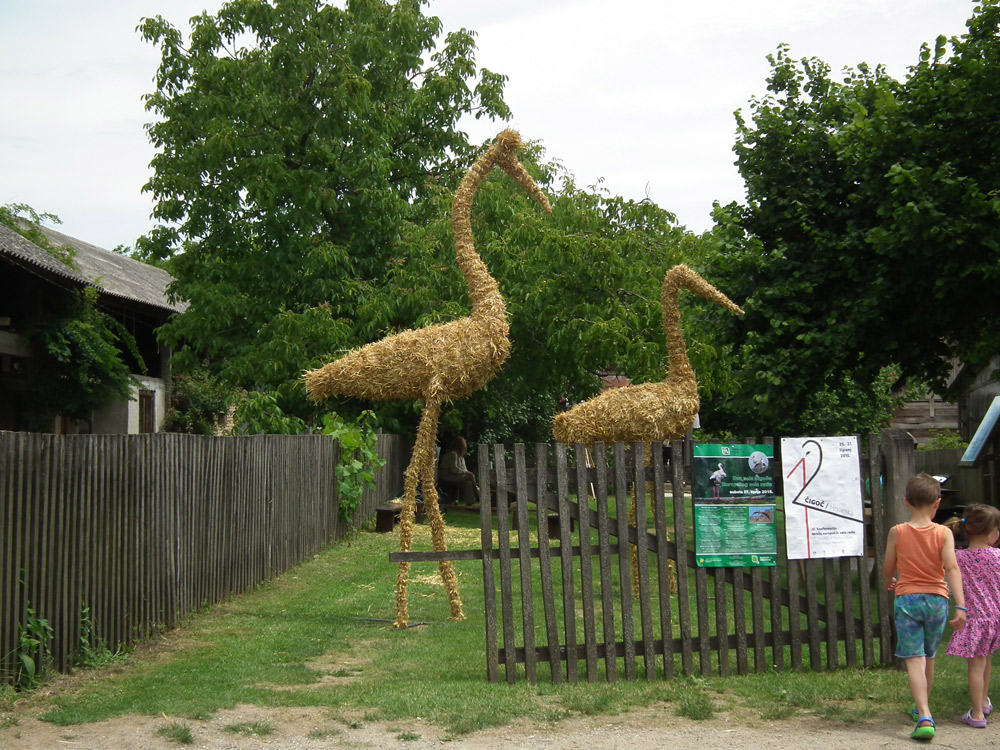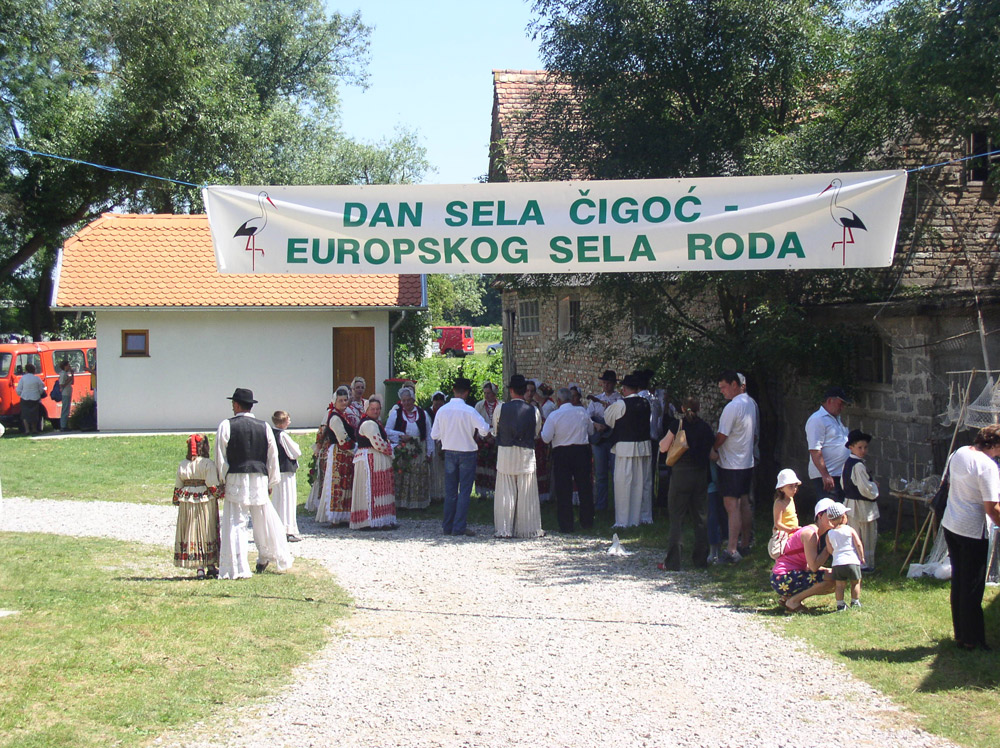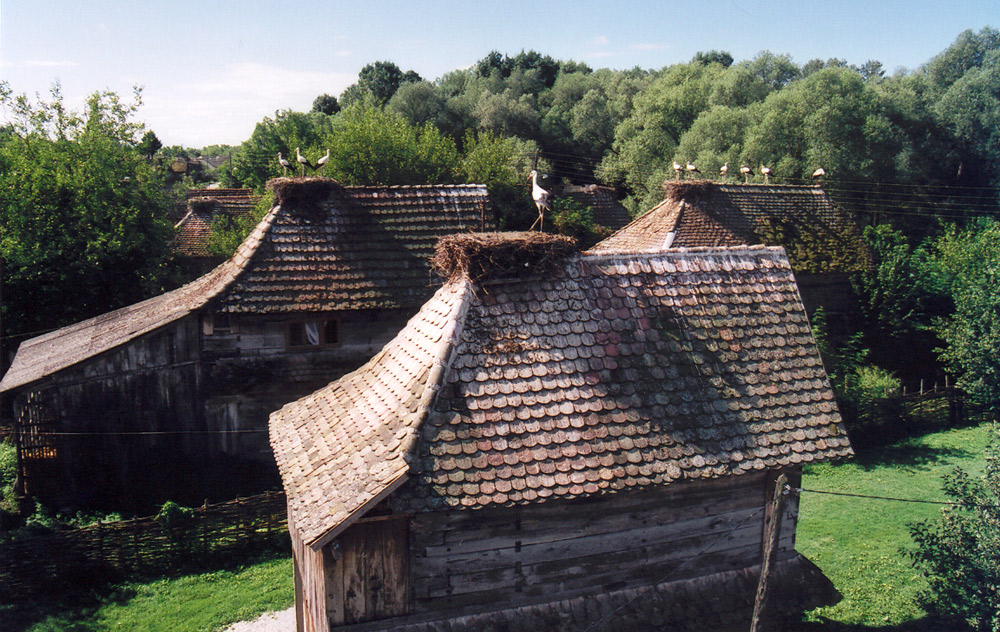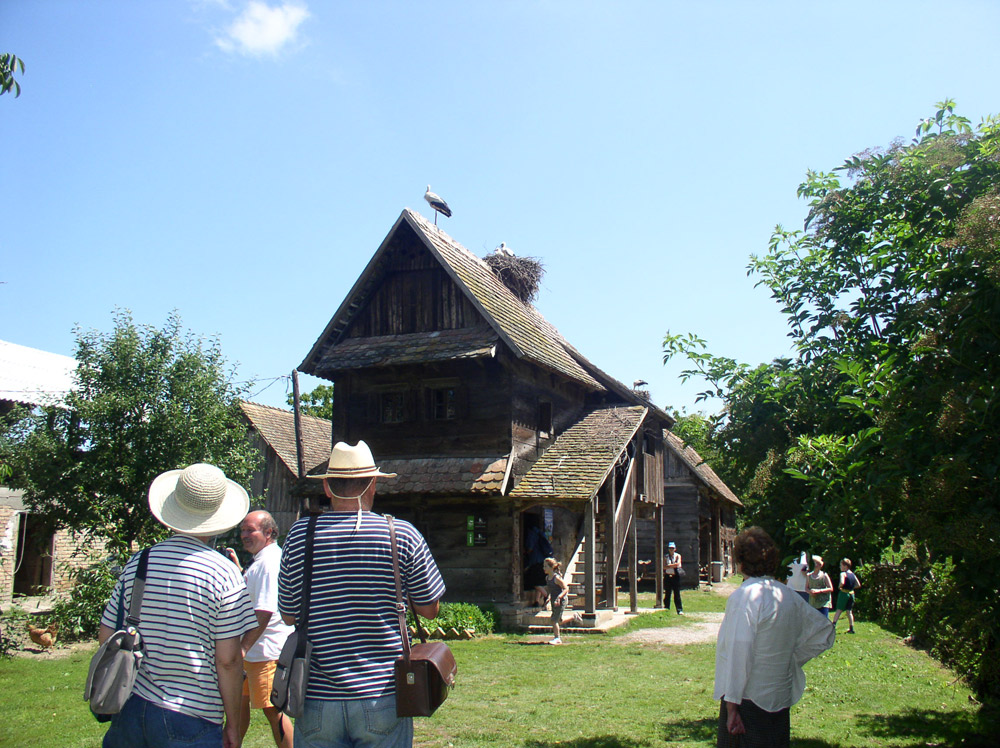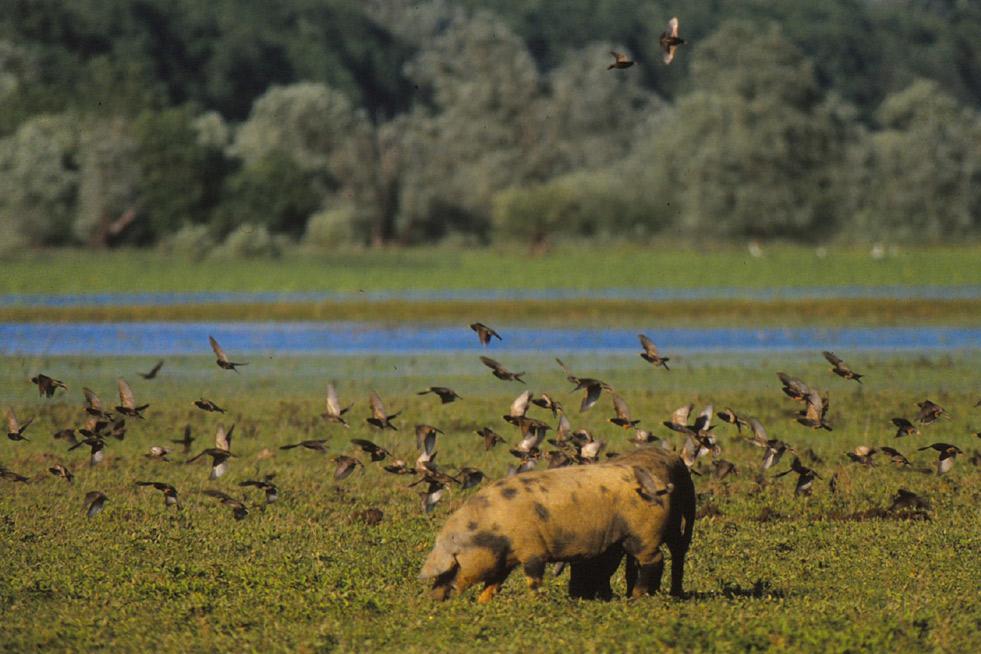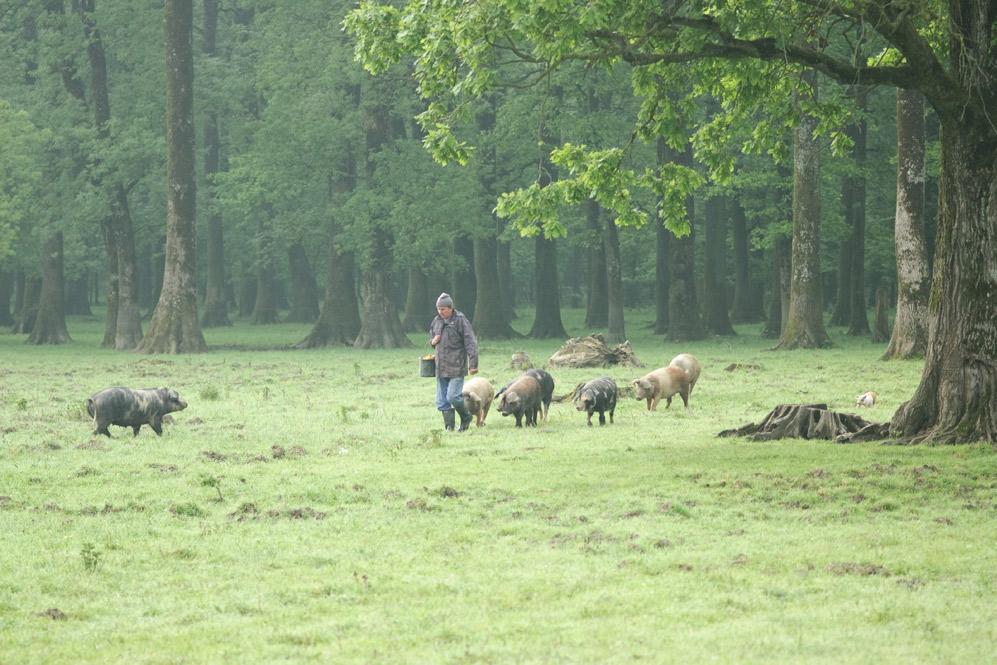Čigoć, Croatia, 1994
Facts and Figures
- Location:
- Croatia, Sisak-Moslavina County, Sisak Municipality, southeast of Zagreb
- Population:
-
 23 - 44Min. and max. numbers of breeding pairs since the year 2000
23 - 44Min. and max. numbers of breeding pairs since the year 2000 78Inhabitants in the year 2017
78Inhabitants in the year 2017 - White stork in Croatian:
- bijela roda
- Nesting sites:
- On the roofs of old wooden houses and stables, some also on electricity poles
- Events:
- Festival of the Storks (second half of June)
Contact
Čigoč Local Board, Mladen Barić, + 385 (0) 99 / 26-44-555, info(at)tradicije-cigoc.hr
Lonjsko Polje Nature Park Public Institution, Ivor Stanivuković, +385 98 944 9520, ravnatelj(at)pp-lonjsko-polje.hr
Lonjsko Polje Nature Park Public Institution, Valerija Hima, +385 98 222 081, bio(at)pp-lonjsko-polje.hr
Lonjsko Polje Nature Park Public Institution, Čigoč Info Center, Davor Anzil, +385 98 222 085, davor.anzil(at)fmail.com
Sisak City, Zrinka Hafizović, +385 91 462 9454, zrinka.hafizovic(at)sisak.hr
Google Map
This map is currently hidden to protect your privacy. If you click the button below it will be loaded from Google.
When enabling the checkbox below your preference will be stored as a cookie to automatically display all maps on page load. The cookie will be stored for one week.
Landscape and habitat
Čigoč is a small village situated on the left bank of the Sava River, along the Tišina Oxbow and part of Lonjsko Polje Nature Park. The noun tišina suggests that it is a quiet and peaceful place; but in fact it is teeming with life. It is surrounded by meadows and pastures, ponds and pools where the storks can find food for their young (frogs, snakes, insects, snails, crustaceans and fish). The village has well preserved old wooden houses built in a traditional way all along the main street. On the western side of the street is an Sava oxbow which provides an important feeding area for the young birds. To the east are the houses, small parcels with meadows, orchards and arable land and behind that, a vast complex of common land, the village pastures. They are actually natural floodplains, a very important feeding area for the storks and the reason for the large number of white storks in Čigoč.
Blessed by the floods
Traditional pasturing is still alive in Lonjsko Polje. With the coming of spring and the retreat of the floods, the people let their farm animals – cows, horses and pigs of old traditional breeds out into the plain to graze. Lonjsko Polje is one of the last regions in Europe where this manner of raising livestock has been retained. Traditional pasturing is an archaic system where several species of animal are kept together. For the use of moist habitats, this is the most economical method. There is a certain logical sequence to the nutrition. The Turopolje pigs prepare the pasture by rooting up the soil, which helps high quality grass to grow for the big animals like Posavac Horse, Croatian Draughthorse and the Slavonian-Syrmian Podolian cow that come afterwards on the pastures. This kind of system is essential for the maintenance of the livestock and the protection of biological diversity. The cultural landscape of Lonjsko Polje is an outstanding example of an area in which people have totally adjusted their way of life to the floods. The long and unbroken tradition of living with the waters has created an system that is intertwined with all aspects of human interaction with the environment, such as the traditional buildings, the organisation of the settlements and the formation of the landscapes, the use of the soil, the sturdy landrace breeds that are so well adjusted to the conditions of flooding. People have organised their lives on the safest places, the slight eminences or ridges along the river itself. Behind the settlements there are the orchards, ploughed fields and meadows, then further off the hay meadows and pastureland that is often under water. This sequence of land use is exactly attuned to the coming of the flood and then the retreat of the waters.
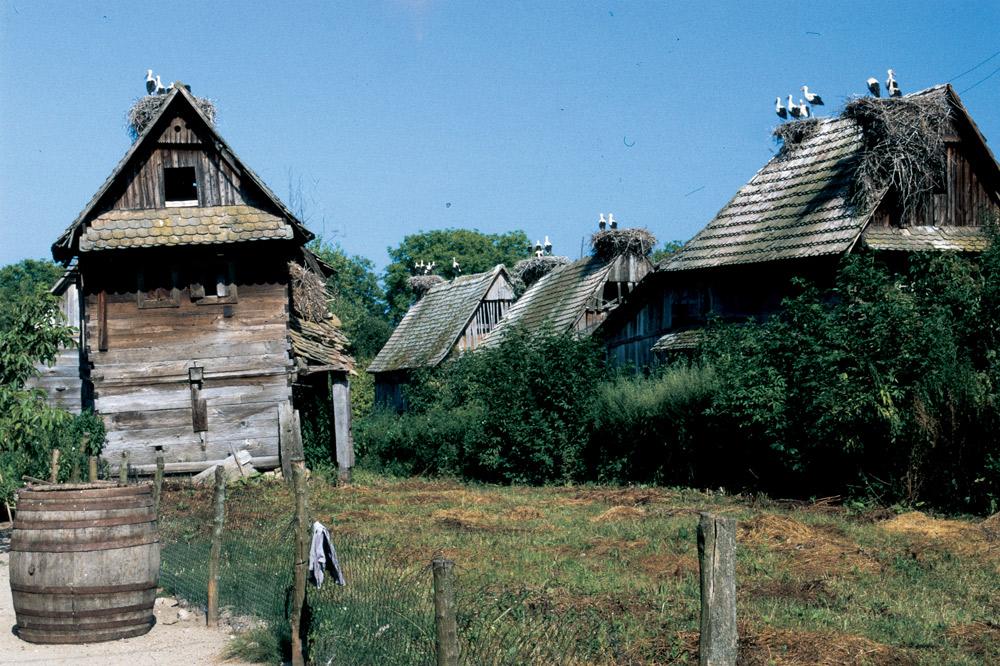
Conservation
- implementation of educational programmes
- installation and maintenance of the nesting platforms
- conservation management by the Lonjsko Polje Nature Reserve management
- cooperation with the Croatian Electricity Power Public Enterprise to safeguard dangerous infratrsuctures like electricity pylons
- rescue of injured storks
- grants to the owners of the houses to conserve the nests
Local players and EuroNatur partners
Čigoč Local Board, Lonjsko Polje Nature Park, Čigoč Volunteer Fire Department, locals, Čigoč Local Board Sisak City, Croatian Society for Birds and Nature Protection, ZOO Zagreb, AWAP Association for rehabilitaion of the injured storks, Croatian Institute for Veterinary, Croatian Water PE, Elektricity Power Public Enterprise, Ministry of culture
Videos on Čigoč and Lonjsko Polje
 Report sighting
Report sighting
Have you seen a white stork or another interesting species of animal, plant or fungus? Make your observation count for nature conservation and share it with other nature lovers! It’s free and it’s fun!






